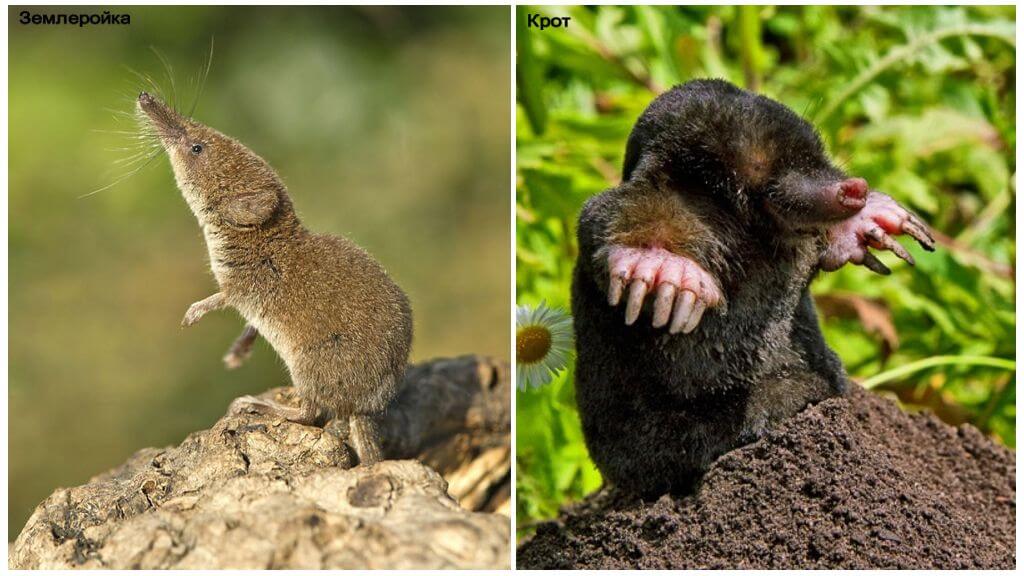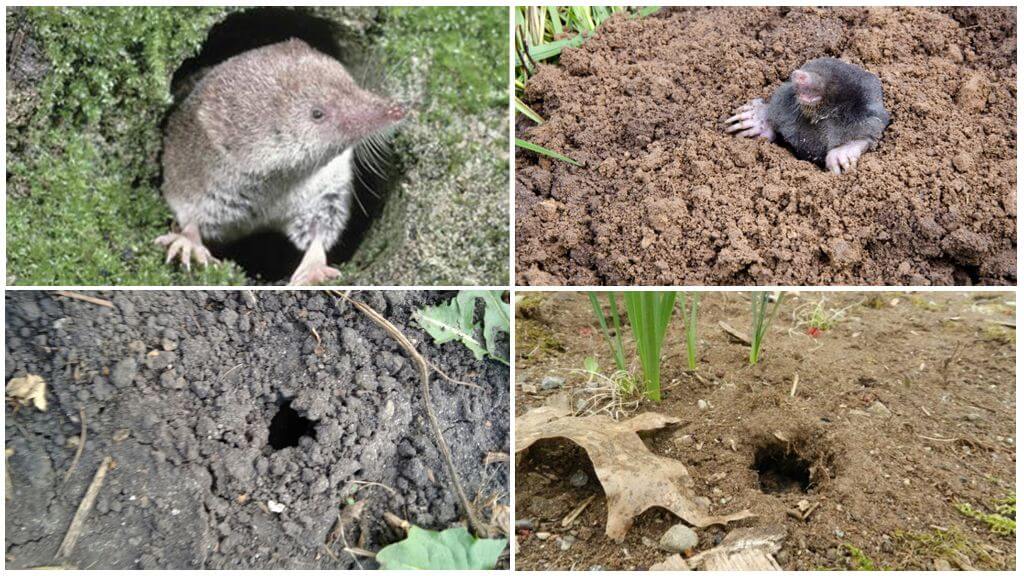How to distinguish a shrew from a mole
- Mole and Shrew
- Mole holes and shrews
How to determine if a shrew or a mole has settled on a plot, it is possible by the appearance of the animal, its burrow. Animals belong to the same class of insectivores, harm crops only by digging numerous passages. The mole and the shrew do not belong to pests with which it is necessary to lead the merciless the fightbut it is worth scaring off your plot.
The appearance of animals - direct evidence
It is possible to distinguish a mole from a shrew by its appearance, but the whole difficulty is that they practically do not crawl out of holes, live underground or are shown at night. Moles, shrews get out during the mating period - April, May, and also after 2 months of their life to arrange a new hole, to search for a suitable place.
- Mole Description. Rodent weighing no more than 120 g, about 20 cm long. It has a short, thick, soft coat of a brilliant black color. A small tail is not more than 4 cm. The muzzle is oblong, the nose is clearly visible. Small eyes round, ears covered with skin. A distinctive feature are the wide front legs with long claws. Such "equipment" allows animals to easily dig the ground, build numerous moves in depth, width. The hind limbs of animals discard the earth, throw out of the hole, form hillocks moles.
- Description of the shrew. The rodent looks like a little mouse. Body length no more than 20 cm. Short, soft, velvet, fluffy wool of gray color. Unlike the mouse has no pronounced ears, muzzle significantly extended forward. It differs from a mole in the absence of shovel-shaped limbs, with a long tail about 12 cm. The eyes are small, barely noticeable, the belly and legs are light.
A photo of the mole and shrew is presented below. If succeeded to catch or see the animal on your site, you can determine exactly who is who.
Interesting!
Often on shrews, moles are hunted by domestic cats.They skillfully catch prey, but do not hurry to eat it. A hungry cat can gnaw a mole, but a shrew will leave competitors without much regret. A specific mouse produces a special enzyme with a strong unpleasant odor that deters predators. Do not disdain only owls, ferrets, weasels, foxes.
Burrow structure - circumstantial evidence
Animals lead a hidden lifestyle, to notice them on the surface of the earth is very difficult. Determine the presence of pests on embankments above the ground.
Moles dig numerous passages to a depth of 2 m, a width of 4 m or more. During the day the animal plows up to 45 m of soil. The upper passages are designed for hunting. In the labyrinths, animals find beetles, earthworms, snails, caterpillars, larvae of the May beetle. Less often moles feed root vegetables, roots, seeds, as well as small mice, snakes, lizards, frogs.
It is possible to distinguish a mole of a mole from a shrew through precisely large embankments of loosened soil above the ground. The number of such bumps is judged on the number of pests. They appear more often in the garden, where the soil is wet, there is a shade from the trees. In early spring, you can see traces of life in the garden.
The shrew builds labyrinths underground with several entrances, exits, but does not leave mounds on the surface. A distinctive feature are the holes in the ground - deep holes. Often, the animal simply occupies ready-made mazes, previously built by rats, mice, hamsters, moles.
On a note!
Shrews and moles are insectivorous animals that do more good than harm (although land owners are fighting), which cannot be said about their kinsman - blind one. This underground resident is constantly under the ground, eats plant food, resembles a miniature beaver due to its large long teeth.









